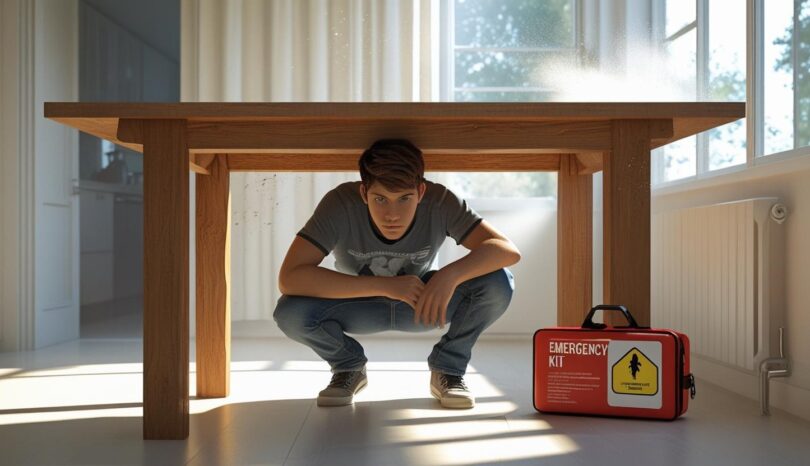More young professionals than ever are living in cities across the United States. Apartments and urban neighborhoods offer convenience and opportunity, but they also come with risks — and one of the most unpredictable is an earthquake.
Even if you don’t live in a high-risk state like California or Alaska, earthquakes can happen almost anywhere. Cities can be especially dangerous because of dense buildings, crowded roads, and limited open spaces. That’s why having a basic plan can make a big difference.
Know your local risks and building safety
Start by checking if your city is located near a fault line. The U.S. Geological Survey (USGS) and FEMA websites offer free tools and risk maps. Earthquakes may not happen often in your area, but when they do, they can cause serious damage in just a few seconds.
Find out if your apartment building follows modern earthquake safety codes. Ask your property manager or landlord if the structure has been reinforced. Some newer buildings are designed to sway without falling, but older ones may be more vulnerable.
Prepare your space and your essentials
Here are some easy steps to protect yourself and your belongings:
- Anchor tall furniture like bookshelves to the wall
- Move heavy items away from your bed or couch
- Keep emergency supplies in one easy-to-reach spot
- Pack a Go Bag with bottled water, shelf-stable snacks, a flashlight, first-aid kit, portable charger, cash, ID copies, and hygiene items
- Know where your gas and water shut-off valves are
Your Go Bag should be by your front door, under your bed, or in a small closet. The goal is to grab it quickly if needed.
What to do when an earthquake hits
If you feel shaking and you’re indoors:
- Get down on the floor to avoid falling
- Take cover under a table, desk, or against an inside wall
- Hold on to something stable and wait until the shaking stops
Stay away from windows, glass, mirrors, and large furniture that could tip over. Do not use elevators. If you are in bed, stay there and use a pillow to protect your head.
If you are outside, move away from buildings, power lines, and anything that could fall. If you are driving, pull over safely and stop until the shaking ends.
What to do after the shaking stops
- Check for injuries and offer first aid if needed
- Expect aftershocks and remain alert
- Turn off the gas if you smell a leak or hear a hissing sound
- Avoid re-entering damaged buildings
- Stay informed through local news and emergency alerts
If your home becomes unsafe, seek shelter through city services, local Red Cross centers, or trusted friends or family nearby.
Helpful apps for alerts and safety
Here are some free U.S.-based apps that can help you before, during, and after an earthquake:
- MyShake App – Developed by the UC Berkeley Seismology Lab, this app sends early earthquake alerts and safety instructions
- FEMA App – Offers real-time alerts and safety tips for all types of disasters
- American Red Cross Emergency App – Tracks weather and natural disasters including earthquakes
These apps are great for people living in cities. Some give alerts seconds before shaking starts, which can be enough time to take cover.
Living in a city comes with energy and excitement, but it’s important to be prepared. Earthquakes are unpredictable, but your response doesn’t have to be. A few smart steps can help you stay calm and safe when it matters most.
Emergency readiness is not just for survival experts. It’s for anyone who values peace of mind in everyday life.









